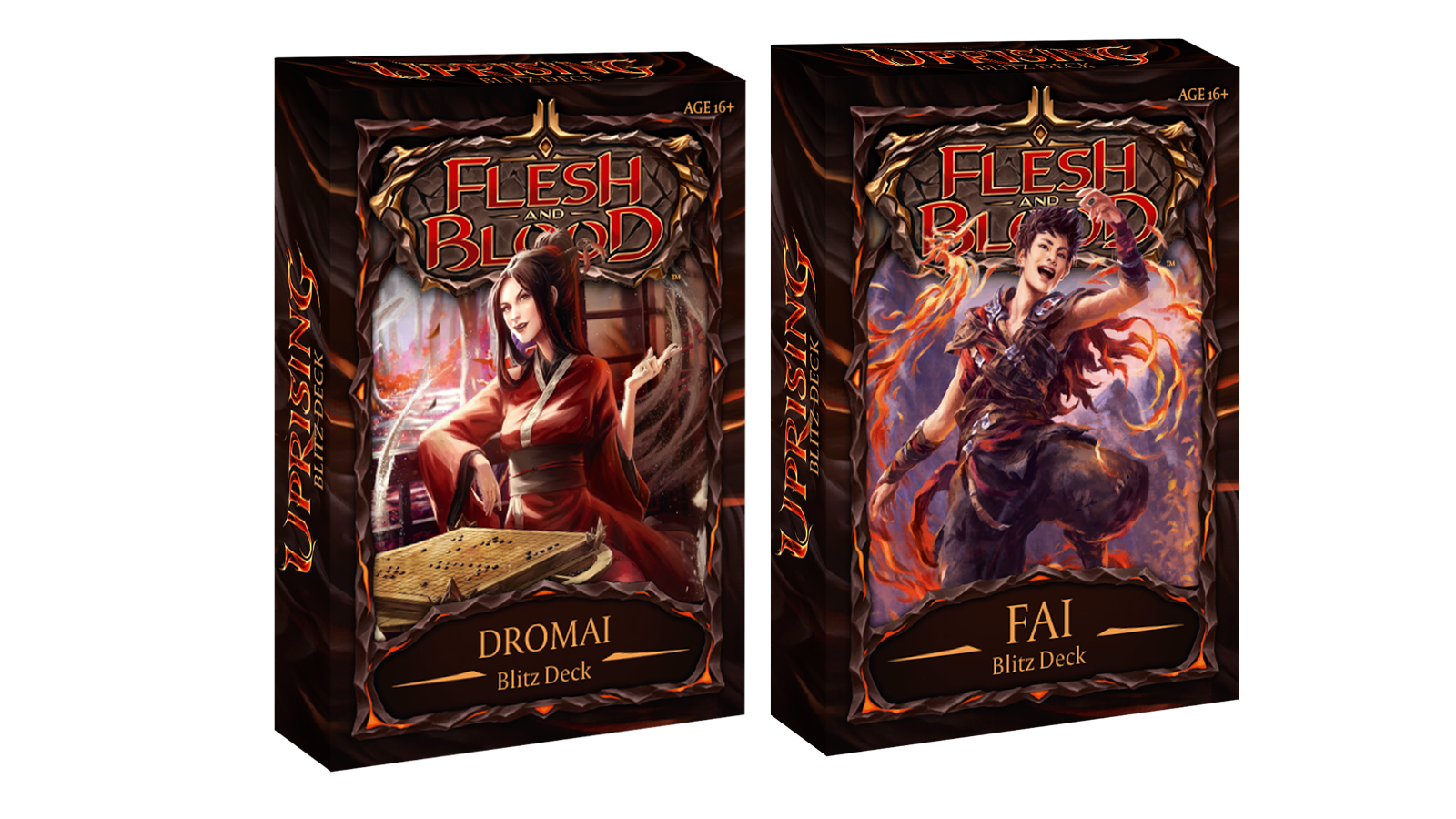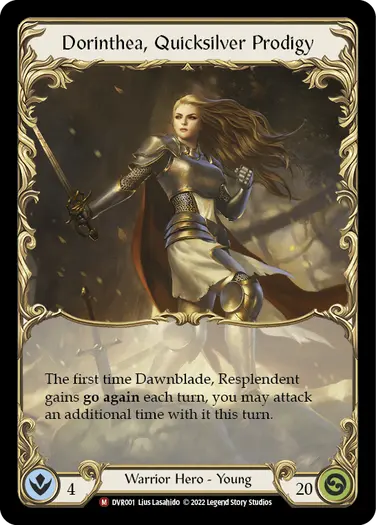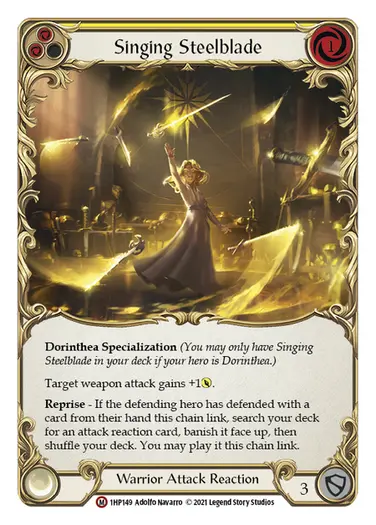We'd like to welcome back guest writer Wesley Lingard to kick off our brand new Jump Start series! Wesley is an Australian player who is aiming to make it to the 2023 World Championship. He has been playing competitive Flesh and Blood since 2020 and has shared his experiences in strategy content on various platforms.
If you are relatively new to Flesh and Blood, or you are thinking about playing for your first time, you might be wondering what products to buy. It can be challenging when entering a new game to find products that will help you learn whilst also acting as a foundation to your first deck. Fortunately, Flesh and Blood has several products and game modes that make it easy for new players to get started.
The first set of products I want to discuss is preconstructed Blitz decks. No matter when you enter the world of Flesh and Blood you will have access to a range of these Blitz decks. Blitz is a quicker and easier-to-learn format of the game (compared to Classic Constructed) that acts as a useful entry point into deck construction and competitive play. In this format, players compete with “Young” heroes, which have relatively small health totals, using 40 card decks with some equipment cards and a weapon or two. This makes for a fast-paced, entertaining game mode that can be easily played with low-cost decks. To learn more about Blitz please click here.
When shopping for a preconstructed Blitz deck there are currently two main options. The first option is to buy a Blitz deck for an individual hero. This product generally contains a 40-card deck, a set of equipment, and the weapon(s), which is all you need to be able to play. The most recent of these decks contain either Fai, a draconic ninja, or Dromai, a draconic illusionist, and can retail for around $12 USD (prices may vary). Additionally, older preconstructed Blitz decks containing other unique heroes can often still be found in stores and online.

The second option for preconstructed Blitz decks is the Classic Battles series. This product comes as a box set containing two different heroes with complete and ready-to-play decks, along with a mini lore book and quick-start playmat. At the moment, there is only one Classic Battles set available for purchase that includes Blitz decks for Rhinar, a savage brute, and a unique version of Dorinthea, a highly skilled warrior. This set can usually be purchased for around $50 USD (prices may vary).

Using any of these preconstructed Blitz decks not only gives you a way to play Flesh and Blood casually with friends or competitively in stores, but it also provides the foundation for building a stronger deck. When I first started playing Flesh and Blood, in 2020, I bought a preconstructed deck from my local games store and, covid permitting, I would go in to play games with other locals in my community. Back then, Blitz didn’t formally exist as its own format, but we found a lot of fun battling each other in quicker matches whilst learning the rules. After opening booster packs between games we would swap out and try different cards and develop new strategies. Slowly, but surely, we built stronger decks, got more skilled at the game, but most importantly we made unforgettable memories.
Understandably, buying preconstructed decks is not everybody's interest. For those new players who enjoy the thrill of opening booster pack after booster pack, you will soon find that you have enough cards to build a variety of decks. Even if your collection mostly consists of common and rare cards, you can still build powerful Blitz decks similar to those used at the World Championships. For example, Michael Hamilton, who became the first Flesh and Blood World Champion, competed with 40 out of the total 52 cards in his Blitz deck being commons and rares. Obviously, when competing at the highest level every card counts. However, when playing at local competitive events or casually with friends, swapping these few majestic and legendary cards for some similar commons and rares hardly makes a difference. As you begin deck building you will discover that the card design of some common equipment cards allows for them to easily substitute with similar legendary equipment pieces. This makes the Blitz format highly accessible to new players who are still building their collection or aren’t yet ready to invest in more expensive cards.
On the topic of investing in cards, let's discuss buying/trading individual cards (singles) in Flesh and Blood. When you are ready to begin upgrading your deck, you might be interested in getting a hold of higher rarity cards such as legendary equipment pieces. You may have decided that you want to buy one or more high rarity cards that you have struggled to find in your boosters, or you may have pulled a high rarity card and would like to trade it for a different one. Either way, you can go about your search in several options. Firstly, you can query your local community. Talking to local players at events or asking in online local community forums is a great way to find someone near you who can help. Just be careful that you respect the rules of your online groups. Also, when buying/trading in person or online be cautious of scams and talk to a friend, community representative, or group admin if you are unsure about a particular situation. Your second option is to buy/trade singles directly from your local games store. Not all stores offer this option but if they do it can be very convenient. Finally, singles can be found online at a range of online websites. I recommend talking to friends and local players to get a recommendation of the best singles websites for your area.
If Flesh and Blood is your first trading card game you might find it strange that some individual high rarity cards sell regularly for upwards of $50 USD. Let me assure you that this is normal amongst popular trading card games, however Flesh and Blood has the added benefit of greater card longevity. Card longevity refers to the length of time a card remains playable in the formats of the trading card game. With Flesh and Blood, sets are not banned from competitive play as time passes, and, other than some cards that are banned for balancing reasons, the only cards rotated out of the game are heroes and weapons that reach Living Legend status. Even specialisation cards that can only be played in decks belonging to a specific hero may remain playable after a hero reaches Living Legend, as new heroes with the same name are added such as the new Dorinthea in the Classic Battles set. Except for Dawnblade, this new Dorinthea can continue to use all the same cards in competitive play even if the original “Young” Dorinthea reaches Living Legend status. Therefore, when buying cards to add to your decks you don’t have to worry as much about whether or not that card will be useful to you in the future. Furthermore, your collection of Flesh and Blood cards becomes increasingly useful as time goes on and old cards that don’t see much play now become more relevant in a future meta.
These tips and suggestions are all useful for beginning your journey into the world of Flesh and Blood, and to wrap up I wanted to introduce you to one more way that you can easily experience the game. I highly recommend trying the Commoner format. This format restricts all players to using common cards making decks low cost and easy to construct. In addition, it helps to bring all players to a similar level making for more balanced gameplay. If you are part of a community or a games store looking at encouraging new players to try Flesh and Blood, I suggest you check out Commoner and have a go running a Commoner event. To read up more on the Commoner format, click here.
Hopefully you now have a stronger understanding on what to look for when buying or building your first Flesh and Blood deck. Have fun, make friends, and continue getting out there with your community in the flesh and blood.
Wesley Lingard is a competitive Flesh and Blood player and author of content relating to gameplay and strategy. The opinions expressed in the above article are his own and do not necessarily reflect the views of Legend Story Studios.



